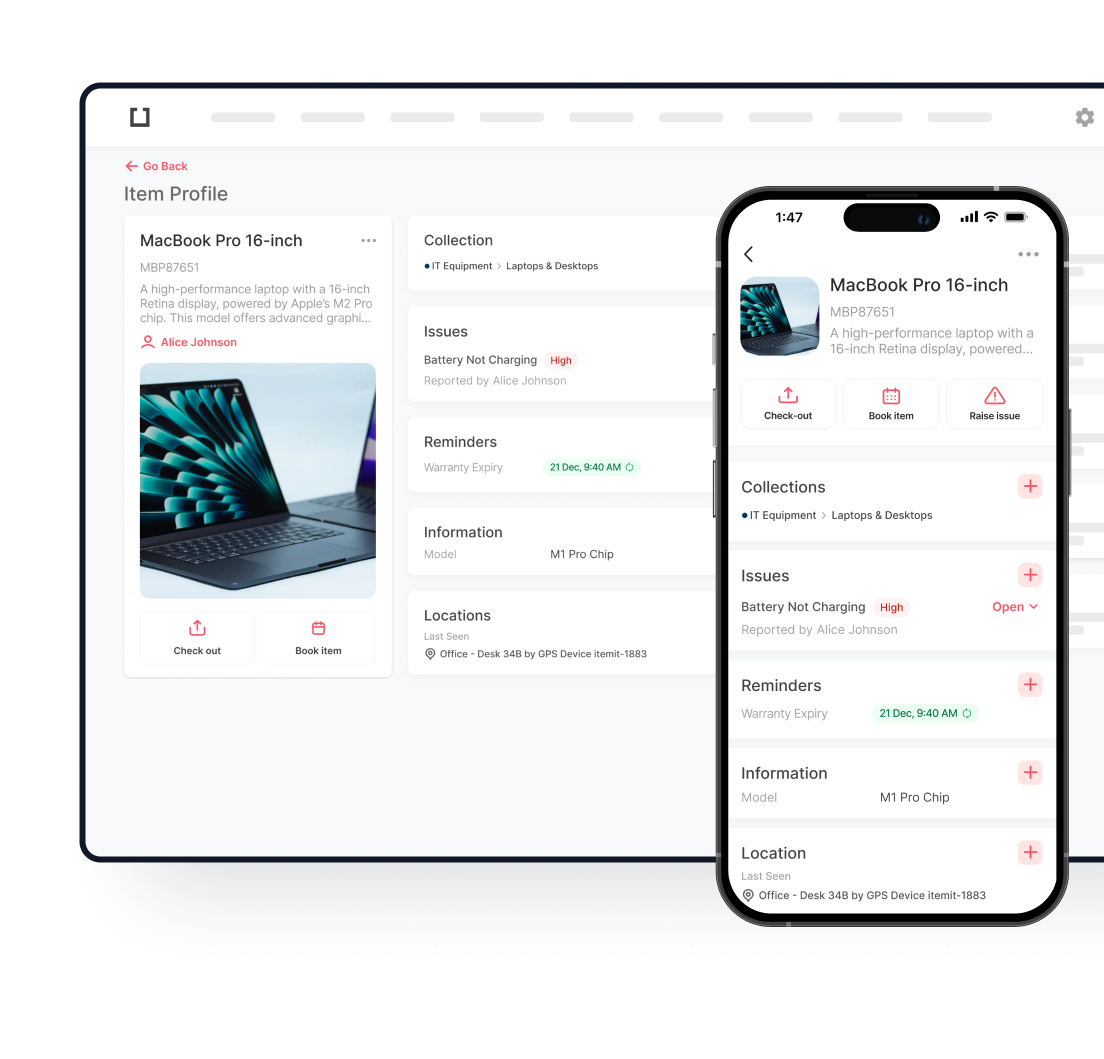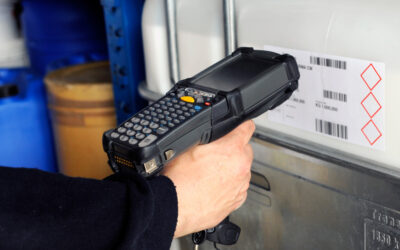
Companies lose roughly 3.2% of their revenue each year because their inventory numbers are wrong. Most businesses only do a complete count once a year. That’s not enough anymore. Smart companies are finding better ways to keep track of what they actually have versus what their computer says they have. itemit makes this whole process easier by cutting down on mistakes and reducing the work your team has to do by hand.
Key Takeaways
- Counting small sections regularly beats doing everything once a year and keeps your business running
- Using barcode systems and RFID cuts counting mistakes by 85% compared to writing everything down
- Getting ready properly and training your staff right makes up 80% of whether your count goes well
- Focus your energy on expensive items first to get the biggest bang for your buck
- When your systems talk to each other instantly, you catch problems before they get worse
Understanding Physical Inventory Fundamentals
Physical inventory goes way beyond just counting boxes. You’re checking that what you think you own actually sits on your shelves. Raw materials need different handling than half-finished products or items ready to ship. Each type has its own quirks.
Getting your inventory right affects everything else in your business. Wrong numbers mess up your orders to suppliers. They make you promise customers things you don’t have. They throw off your cash flow because you’re buying stuff you already own or running out of things you need.
Your accountants care about this stuff too. Life cycle inventory planning falls apart when your starting numbers are garbage. You can’t forecast what you’ll need next month if you don’t know what you have today. Stock control becomes a guessing game instead of a science.
Banks and investors look at your inventory numbers when deciding whether to lend you money. Auditors dig into how you count things because mistakes here show up everywhere in your financial reports. Get this wrong and you’ll have bigger problems than just not knowing where your stuff is.
Essential Preparation Strategies
Good physical assets start months before anyone touches a single item. You need time to get your people trained, your equipment ready, and your warehouse organized. Rushing leads to expensive mistakes that take weeks to sort out.
Your warehouse needs to make sense before counting day arrives. Everything should have a clear label and live in the right spot. Clean up the junk that’s been sitting around forever. Group similar items together so your teams can move through sections without backtracking.
Implementing proper asset tags create the foundation for accurate identification and tracking throughout the counting process. Your tags need to scan easily and stick to items without falling off.
Critical Preparation Checklist:
- Staff Training Programs: Show people exactly how to count, scan, and spot problems before they start
- Equipment Verification: Test every scanner, tablet, and backup device weeks ahead of time
- Communication Protocols: Tell suppliers, customers, and your own teams what’s happening and when
- Documentation Systems: Have count sheets, forms, and problem reports ready to go
- Security Measures: Control who can access areas during counting and assign supervisors
Training makes the difference between smooth counting and chaos. Your people need practice with the equipment. They need to know what to do when they find problems. Don’t assume everyone knows how to use a barcode scanner properly.
Check your technology before you need it. Dead batteries and broken scanners on counting day create disasters. Have backups ready. Make sure your WiFi reaches everywhere your teams will work. Test everything twice.

Technology-Driven Counting Methods
Technology fixes most counting problems before they happen. Barcode scanning stops people from writing down the wrong numbers. When someone scans an item, the computer knows exactly what it is and updates the count automatically.
RFID asset tracking software delivers even greater advantages for high-value items requiring precise tracking. RFID tags let you scan multiple items at once without touching each one. This works great for expensive stuff that you need to track carefully.
Smartphones and tablets changed everything about inventory counting. Your team scans items and the numbers go straight into your system. No more writing things down and typing them in later. No more lost paperwork or illegible handwriting.
When your scanning equipment talks directly to your inventory system, mistakes disappear. People can’t accidentally write down 15 instead of 50. The scanner reads the barcode and puts the right information in the right place every time.
Modern software connects everything together. Scan an item and your inventory levels update instantly. Generate reports on the spot. See which areas still need counting and which teams are behind schedule.
Technology Implementation Benefits:
- Error Reduction: Cut mistakes by 85% compared to paper and pencil methods
- Speed Enhancement: Count 3-5 times faster when machines do the data entry
- Real-Time Updates: Know your exact inventory levels as soon as items get counted
- Audit Trail Creation: Every scan gets recorded with who did it and when
- Cost Savings: Less people needed and fewer mistakes to fix later
Strategic Approaches to Different Inventory Types
Raw materials usually come in bulk without individual labels. You might weigh bags of plastic pellets or count boxes of screws. These items break down over time or get used partially, so your counting methods need to account for that.
Work-in-progress inventory sits somewhere between raw materials and finished products. Half-built items need special attention because you have to figure out how much work has been done. Your counting teams need to understand your manufacturing process to get these numbers right.
Finished goods are easier to count because they have clear labels and packaging. Most finished products have barcodes that make scanning simple. But watch out for different sizes, colors, or promotional packages that might confuse your counters.
Selecting the right inventory scanner becomes crucial for handling these diverse product formats efficiently. Some scanners work better for small barcodes while others handle damaged labels better.
Understanding different types of inventory management approaches helps organizations select appropriate methodologies for their specific inventory characteristics. Expensive items need individual attention and detailed records. Cheap commodity items might get counted in groups or estimated using samples.
Items that could spoil or become obsolete need extra attention during counts. Check expiration dates and look for damage while you’re counting. Life cycle inventory considerations change how carefully you track different items based on their age and condition.
Cycle Counting vs. Full Physical Counts
Cycle counting means checking small sections regularly instead of shutting down to count everything at once. Most businesses find this works better because it doesn’t stop production and catches problems before they get big.
How often you count depends on your business. Items that move fast might need weekly attention. Stable inventory might only need monthly checks. The goal is catching problems early instead of waiting for your annual surprise.
Cycle Counting Advantages:
- Operational Continuity: Keep working while counting happens around normal operations
- Error Detection: Find and fix problems quickly instead of letting them pile up
- Resource Optimization: Use smaller teams handling reasonable amounts of work
- Accuracy Improvement: Constant attention prevents small problems from becoming big ones
- Cost Effectiveness: Less disruption and fewer people needed overall
Resource needs are completely different between these approaches. Full physical counts require extra temporary workers and shutting down operations. Cycle counting spreads the work across the whole year, making it easier to budget and staff.
Keeping accuracy high through regular small counts works better than trying to fix everything once a year. Problems get spotted and solved quickly instead of accumulating for months.
When you run the numbers, cycle counting almost always costs less while giving better results. Better accuracy, less disruption, and lower resource needs make it the smart choice for most businesses.

Post-Count Analysis and Reconciliation
Start investigating differences as soon as counting finishes. Look at the biggest dollar value mistakes first because those hurt your business most. Try to spot patterns that point to training problems or equipment issues instead of random errors.
Figure out why problems happened so you can prevent them next time. Common causes include poor training, broken equipment, or confusing processes. Write down what you learn so future counts go smoother.
Fix inventory record problems quickly to prevent ongoing losses. Big changes usually need management approval before updating your system. Keep detailed records of what got changed, who approved it, and why.
All adjustments need documentation that auditors can review later. Your computer system should track who made changes, when they happened, and the reasons given. This paperwork becomes important during financial audits.
Turn every counting exercise into a learning opportunity. Look at mistake patterns to find training needs, process improvements, and equipment upgrades that will make next time better.
Overcoming Common Physical Assets Challenges
People make mistakes even with good training and equipment. Standard procedures with double-checks help reduce errors. Emphasize getting it right over getting it done fast.
Technology problems usually come from poor preparation rather than bad equipment. Test everything thoroughly and have backup plans ready. Train people properly and expect some slowdown while they learn new systems.
Crowded warehouses make counting harder when items don’t have clear organization. Spend time before counting to create clear paths and logical groupings. You might need to temporarily reorganize sections to make counting possible.
Time pressure creates accuracy problems when teams rush through procedures. Build realistic schedules with extra time for problems. Focus on quality over speed throughout the whole process.
Coordinating multiple teams in large facilities gets complicated fast. Set up clear communication and centralized oversight to prevent teams from missing areas or counting the same things twice. Regular check-ins keep everyone on track.
Performance Measurement and Optimization
Track key numbers to see if your inventory accuracy gets better over time. Compare physical counts to computer records to measure how well your counting procedures and technology work.
Measure improvement consistently across counting cycles. Set baseline accuracy rates and track progress toward your goals. Regular reports keep management informed about how well the system works and where improvements are needed.
Essential Performance Metrics:
- Inventory Accuracy Rate: What percentage of items have the right quantities and locations
- Cycle Count Efficiency: How many items each person can process per hour
- Variance Resolution Time: How long it takes to investigate and fix differences
- System Update Speed: Time between counting items and updating records
- Cost per Count: Total expenses divided by number of items checked
Compare your results to industry standards and set realistic improvement goals. World-class inventory accuracy usually hits 95% or better, but expectations change based on your industry and what you’re counting.
Use comprehensive reporting to spot trends and opportunities for improvement. Modern inventory systems provide analytics that turn counting data into actionable insights for making operations better.
Keep refining your counting procedures based on performance data and changing business needs. Review your methods regularly to make sure they stay current with technology advances and company growth.
itemit transforms physical assets management by automating tedious manual processes that traditionally consume hours of labor time. The platform’s intelligent tracking system reduces counting errors by up to 90% through automated data capture and real-time synchronization across all inventory locations.
Teams spend less time on paperwork and data entry, instead focusing on value-added activities like variance investigation and process improvement. itemit’s mobile scanning capabilities eliminate double-handling of information while providing instant visibility into inventory discrepancies as they occur. This comprehensive approach cuts physical inventory completion time by 60% while delivering accuracy rates that exceed industry benchmarks, making it an essential tool for businesses serious about optimizing their inventory management processes.

Try itemit
Choose a better way to track
your assets.
Start your free 14-day trial now!
Frequently Asked Questions
How often should physical inventory counts be performed?
Most businesses benefit from quarterly cycle counts rather than annual full counts, though frequency depends on inventory volume and business type.
What's the most accurate method for physical inventory counting?
Electronic counting using barcode or RFID scanning reduces errors by 85% compared to manual methods while providing real-time data updates.
Can small businesses implement advanced inventory tracking systems?
Yes, modern cloud-based solutions and mobile apps make sophisticated inventory tracking accessible and affordable for businesses of all sizes.
How do you handle inventory discrepancies discovered during counts?
Immediate investigation of variances through transaction history review, followed by systematic root cause analysis and corrective action implementation.
What preparation steps are most critical for successful physical inventory?
Advance planning (3+ months), comprehensive staff training, and ensuring all equipment and systems are tested and functional before beginning the count.

Keep Learning
itemit Blog
Tips, guides, industry best practices, and news.
A Guide to the Different Types of Inventory Management
Discover the different types of inventory management systems and how each can improve efficiency and accuracy in managing your business inventory.
Understanding the Inventory Tracking Process and Its Importance
Learn about the inventory tracking process and its importance. Discover how it helps improve efficiency, accuracy, and overall business management.
How to Choose the Right Inventory Scanner for Your Business
Use our guide to choose the right inventory scanner for your business. Learn which features matter, compare types, and get tips for selecting the best fit.


